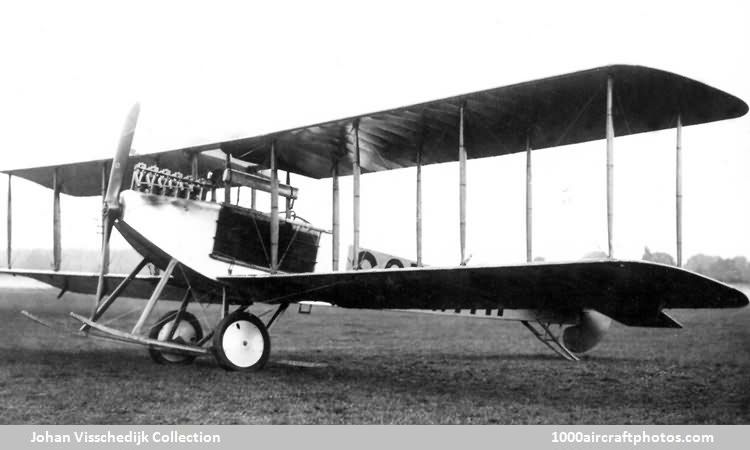08/31/2010. Remarks by Johan Visschedijk: "In March 1913 the Daily Mail newspaper offered £5,000 to the winner of a Circuit of Britain, the main conditions being that the aircraft must be a 'waterplane' entirely of British design and construction, and that the machine should fly, in 72 continuous hours, not only round England, Scotland and Wales, but to within one mile of Kingstown Harbour, Ireland.
Dates eventually fixed for the 1913 Circuit of Britain event were August 16-30. This was to be a most exacting affair, with 1,540 mls (2,478 km) to be covered in nine stages. Three of the four entries were withdrawn: Cody's 'Circuit' Waterplane, McClean and Smith's Short S.68, and Radley and England's Waterplane. This left the Sopwith entry only, a new type of floatplane, clearly developed from the Anzani Tractor seaplane already described, though having a 100 hp six-cylinder all-British Green engine and four-bay wings of equal span.
Although built hurriedly, this fine new machine was of very handsome and businesslike appearance, its lines being enhanced by the fine aerodynamic entry afforded by the slim Green liquid-cooled engine, the radiators for which were disposed as large flat surfaces, one on each side of the fuselage between the wings. The center section was left uncovered, and in the definitive version the gap thus left had 'endplate' fairings. The primary object of the gap was to allow the crew to get out smartly in a crash, though some later Sopwith aeroplanes had 'fancy' center sections for other reasons-notably clear view. The two seats were in tandem; construction was of wood, with fabric covering; the two main floats were of lenticular form; and the tail float was cylindrical.
The contest now having been re-convened by the Daily Mail for August 25, and the 'two Harries' (Harry Hawker, who was the pilot, and his compatriot Harry A. Kauper) left the Solent at 5.30 am in calm and mist, and by the end of that day had set a new record for over-water flying. They alighted at Beadnell, Northumberland, at 7.40 in the evening, this notwithstanding an unscheduled alighting, occasioned by a burst exhaust pipe which had heated water-connections and boiled the water away, the radiator system being refilled at Seaham with sea-water. Thus the Green product, as well as the Sopwith, was able to continue next day, when Oban was the night-stop.
At 5.42 am on the following day (August 27) this splendid outfit was once more getting under way; but a waterlogged float obliged a return for repair. In spite of this the new Sopwith pressed on to Lame (Antrim, Northern Ireland); but after flying on nearly to Dublin Hawker decided to alight to adjust valve-springs on the engine, his foot slipped on the rudder-bar, and the Sopwith fell into the sea off Loughshinny, a few miles north of Dublin. Hawker was unhurt, Kauper broke an arm; but 1,043 mls (1,679 km) had been covered in 20 hr flying time, and the Daily Mail awarded Hawker a special prize of £1,000 for his determination.
Subsequently a landplane version of the same machine was built (pictured above), with a twin-wheel/twin-skid landing gear. Less than six weeks after the floatplane crash, this aircraft was first tested by Hawker at Brooklands on October 4, 1913. On this occasion the rudder bar once again enters the story; for, finding himself caught in a down-current soon after take off, and realizing the inevitability of a crash, Hawker deliberately removed his feet from the bar in order to brace himself. Thus, as the ensuing sideslip finished abruptly (near the Weybridge-Byfleet road) he sustained only fairly minor injuries, the aircraft was wrecked."
